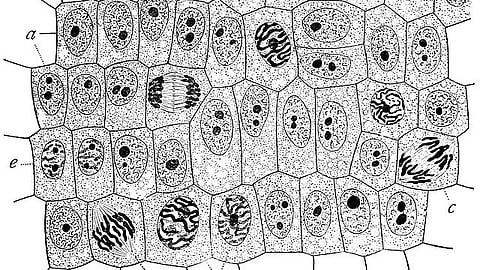Researchers of the Genome Dynamics Project team at Tokyo Metropolitan Institute of Medical Science ·revealed new mechanism controlling cellular proliferation in response to serum, which triggers growth of resting cells.
One of the key pathways for cellular growth is the phosphoinositide 3-kinase (PI3K) –mTOR (mechanistic/mammalian target of rapamycin) pathway. mTOR regulates the cellular response to nutrient availability. Dysregulation of the mTOR signaling pathway is intimately involved in many human diseases, especially the multitude of different human cancers. This pathway mainly plays major roles during G1/G0, preparative stages for proliferation. Another key pathway during proliferation cycle, especially during S phase, is the replication stress checkpoint pathway. This pathway protects the genome from potential damages that may occur during the process of DNA replication. Both pathway needs to be precisely regulated in order to prevent genome instability that would lead to uncontrolled growth of cancer cells.
Claspin is a key factor that mediates the replication stress checkpoint signaling. It receives a signal from the upstream lipid kinase, ATR, and transmits it to a downstream kinase, Chk1. Chk1 prevents the genome-threatening cell cycle progression in the face of stalled replication forks. These nuclear events have not been linked to PI3K-mTOR pathway that has been assumed to mainly occur in cytoplasm, although the presence of the latter factors in nuclei has been reported.
Living organisms are exposed to various types of stress, and they have developed stress response systems to deal with these situations. In the cellular response pathway to replication stress, a signal is transmitted from sensor kinase (ATR) to effector kinase (Chk1) to temporarily stop the progression of replication and cell division. Claspin is a mediator of this signal, which is essential for the checkpoint signal transduction.
Chi-Chun Yang, Ph.D, and Hisao Masai, Ph.D, at the Tokyo Metropolitan Institute of Medical Science discovered a novel function of Claspin in the nutrition-induced signaling pathway. The researchers found that Claspin is essential for activation of PI3K-PDK1-mTOR pathway and that of downstream factors as well as for cell survival during the serum induced growth restart.
Masai said, “This was completely unexpected. The PI3K-mTOR pathway, the major nutrient-induced pathway, has been studied intensively, but no functional links to the nuclear events/factor have been known. We are excited to know that Claspin plays unexpected and essential roles in the mTOR pathway. Our studies also suggest striking similarity of Claspin-mediated activation of replication checkpoint and potential mode of its action in the nutrition-induced signal transduction from the upstream lipid kinase (PI3K) to the downstream kinases (PDK1 and mTOR).”
The study would provide new targets for therapeutic interventions of metabolic disorders such as obesity, diabetes, and cancers resulting from the dysregulation of the mTOR pathway. (PB/Newswise)
Hurry up! Join the Medical Internship 3.0 at MedBound!


